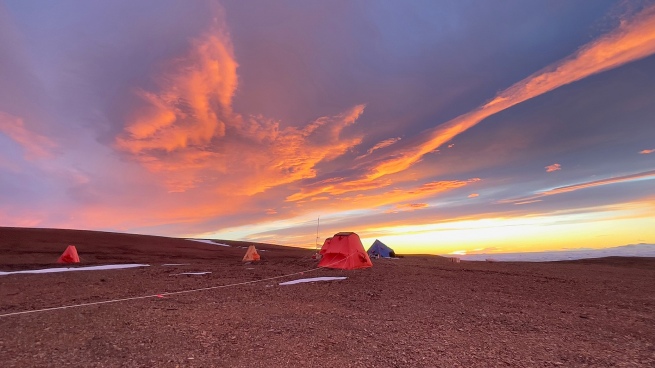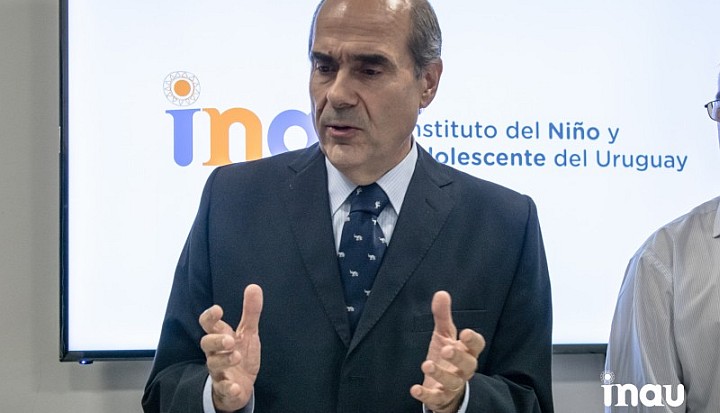Researchers from the Faculty of Natural Sciences and Museum of the National University of La Plata (UNLP) are working together with the Argentine Antarctic Institute (IAA) on the record of fossil fish 150 million years old south of the Antarctic Peninsula, which will allow knowing the evolution of these forms of life, their adaptation to climatic changes and their migrations during the formation of the continents.
Soledad Gouiric Cavalli, doctor in Natural Sciences from the UNLP and Conicet researcher at the Museo de La Plata, told Télam that while she was doing her doctoral thesis she realized that there was little record of Argentine fish from the Jurassic period in Antarctic territory, which which led her to contact the head of the IAA Vertebrate Paleontology project, Marcelo Reguero.
“He proposed to me to present the plan for a field research campaign that we ended up concretizing in 2016,” said Gouiric Cavalli.
“This serves to interpret part of the evolutionary history of the area, including not only the faunal diversity but also providing information on possible trophic interactions, estimates of paleotemperatures and paleocurrents”Soledad Gouiric Cavalli, Conicet researcher
The investigation focused on a place in the Antarctic Peninsula where marine sediments from the Ameghino Formation outcrop, which is located about 114 kilometers south of Marambio Island, one of the southernmost points where scientific camps were deployed by helicopter.
“In that first experience we were able to gather a large number of samples that allowed us to broaden the lines of research, to think about the link between fish from Argentina and Antarctica with fossils from the same period found in the Caribbean Corridor and in Europe,” said the specialist.
This finding “allows us to infer a Relationship between Paleo-Pacific and Tethys Sea fishes that covered part of what is now Europe,” he explained, adding that they are seeking “to elucidate which fish inhabited the seas that covered what we now know as Argentina and Antarctica in order to understand their evolutionary history and their connection with those that inhabited the sea of Thetis”.
“The reality is that any study of fossil fish in Argentina and Antarctica is very valuable because fossil fish from the southern hemisphere are virtually unknown compared to those in the northern hemisphere, since research in our region is in full swing,” he added.
The research will reveal what these fish were like, but also what fauna they coexisted with and the marine routes or corridors that were open and could have allowed the exchange of species.
“This serves to interpret part of the evolutionary history of the areaincluding not only faunal diversity but also providing information on possible trophic interactions, estimates of paleotemperatures and paleocurrents”, he pondered.
Among the findings there are “forms of fish that were not represented in Argentina, different ontogenetic stages of the same species, groups, orders and families; it is most likely that the vast majority of what we find is unknown to science until now” , indicated Gouiric Cavalli.
An challenge for researchers it is that the materials appear in broken slabs that must be assembled in a puzzle with the fossil remains in order to study them in detail. “This summer we found some complete samples in some slabs and that will make our study easier,” he remarked.
The researcher described the workplace as “a mille-feuille of stones with different levels of overlapping slabs; once we identify a point of interest by some visible sign, we can spend up to eight hours sitting down breaking slabs with a hammer in search of fossils.”
Of the fourth campaign in the area Last summer, the team brought 9 crates of between 30 and 45 kilos of samples to be processed and incorporated into the IAA fossil repository.
“This summer we returned with some 200 samples that are equivalent to 500 kilos of slabs, which is possible because the helicopters that deploy and redeploy the camps also make flights to recover the sample crates or to transport tools to the camps,” he specified. the logistics required by the investigation.
The camps are generally from 25 to 30 days depending on the weather, but this summer it was extended to 40 days and the team returned at the end of February.
“We travel with four people; the researchers recognize on the ground which are the most interesting samples and the sites to explore, the technicians know the most effective methods to extract them and the staff of the Joint Antarctic Command of the Armed Forces (Cocoantar) is in charge of provide logistical support to sustain the deployment in such an inhospitable place,” he detailed.
Gouiric Cavalli stated that setting up a camp in Antarctica “is something very expensive for the national State and a very great effort for all the people who move”, for which he stressed the importance of “recovering all the samples that are found even if they are not the object of our particular investigations”.
“Furthermore, the conditions of each find are recorded because the orientation of the fossil in a slab could help to pinpoint the current of the water at that time; and the global warming that is evident year after year produces notable changes in the physiognomy of the Antarctic landscape that leave uncovering new surfaces to explore,” he specified.
The project of IAA Vertebrate Paleontology is included in the Annual Antarctic Plan.
The Marambio base is located on the island of the same name in the Weddell Sea, northeast of the Antarctic Peninsula and 3,304 kilometers from Buenos Aires.
The temperatures in the place reach thirty degrees below zero and the winds reach 120 km/h, a speed that prevents a large accumulation of snow in the area of its plateau.










